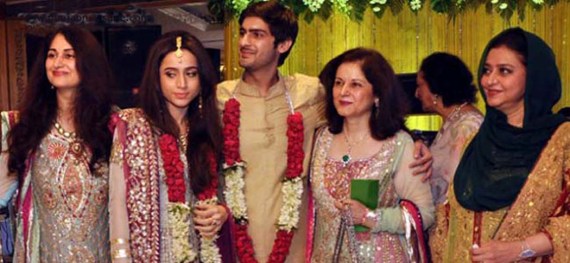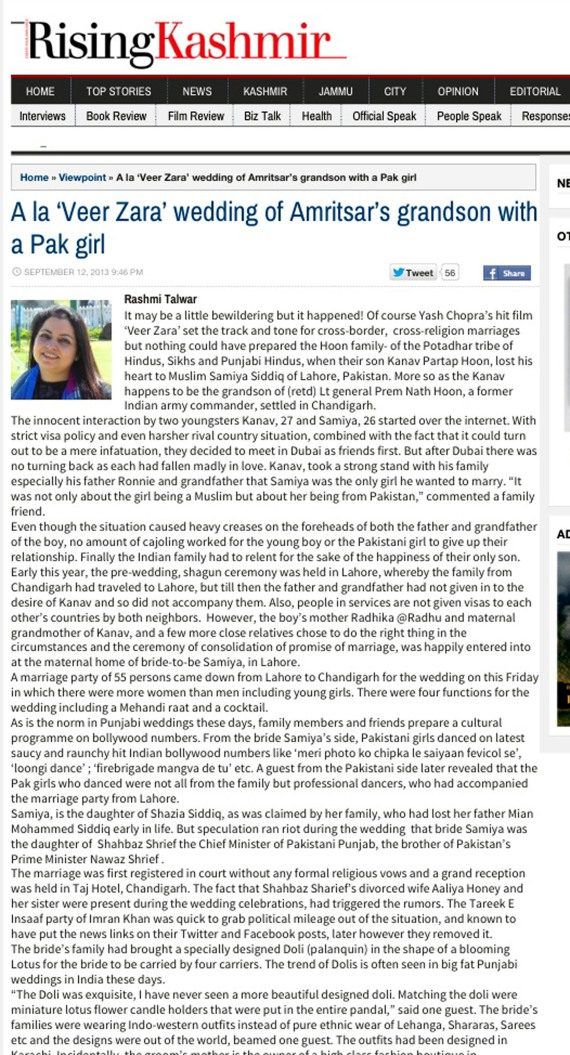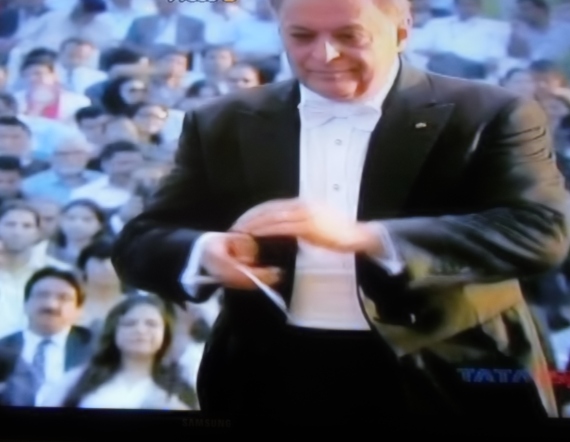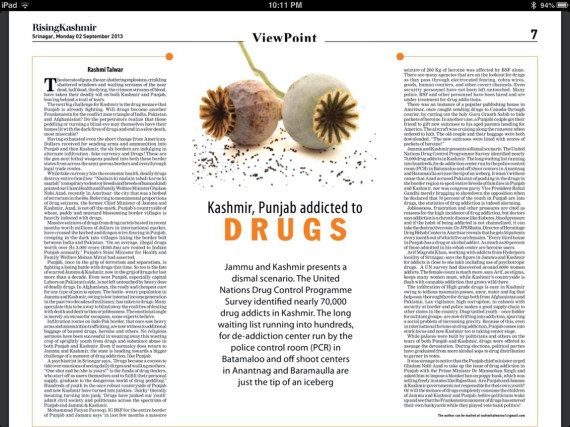While buying roadside knick-knacks, if an old man is seen looking closely at a tall gate of Tyndale Biscoe and Mallinson School in Sheikh Bagh locality of Srinagar, surely, that night’s bedtime story would be an inspiring and hilarious tale of the first football of Kashmir.
The first football- a mini humpty-dumpty- traveled with a newly-wedded English couple of Rev Cecil Tyndale Biscoe, his new bride Blanche Violet Burges in 1891 from London, England. It sailed the seven-seas and reached Karachi, bumped on to Rawalpindi and bounced over to a horse–carriage to Baramulla to finally set sail in a ‘doonga’ – an indigenous Kashmiri boat- and reached Srinagar in 1891.
Tyndale Biscoe and the first football in Kashmir
Tyndale Biscoe (TB) recalled with glee his tryst when he brought the first football to Kashmir in the autumn of 1891 – “When I brought my bride to Kashmir in November 1891, I brought, also a leather football. When I held it up before the assembled school they asked, what is that?
TB- It is a football.
Boys- What is the use of it?
TB- For playing a game.
Boys- Shall we receive any money if we play that game?
TB- No!
Boys- Then we will not play that game. What is it made of?
TB- Leather.
Boys-Take it away! Take it away!
TB-Why should I take it away?
Boys- Because it is jutha (unholy) we may not touch it, it is leather.
TB- I do not wish you to handle it. I want you to kick it and to-day you are going to learn how to kick it, boys.
Boys- We will not play that jutha game.
So instead of the usual English lesson with the senior class, where many boys had whiskers and beards and some were married and had children, Biscoe described the game and, drew a map of a football ground on a blackboard, showing the position of the players, etc.
Anticipating trouble, he called the teachers, who were all Brahmins, and ordered them to picket certain streets to prevent the boys from running away. When all was ready he gave the orders to proceed to the ground and-“shooed them on like sheep or cattle to the market” when the boys entered the gate. It was a great sight never to be forgotten- All boys shuffling along the street wearing wooden clogs-kharav, carrying their firepots-kangris under flowing phirans or cloaks, on their way to play football. Some were wearing huge gold earrings, some had nose rings and all of them wore their caste marks.
Soon goal posts were put up and teams lined up. A crowd of townsfolk grew every minute, all eager to see the new mischief this foolish young sahib (Tyndale Biscoe) was up to now. When everyone was set, Biscoe put the football in the centre and ordered to kick.
The black-bearded Brahmin looked at him, then at the crowd of fellow co-religionists around, and hung his head. Biscoe again ordered, “Kick!” – Nothing happened. He boomed: “I will give you five-minutes to think, and then something will happen, which you will not like.” What was going to happen, he had not the slightest idea, but fortunately he had armed his teachers with single sticks, in order to drive the boys to the common ground. He lined up the teachers at the goals and told them that when they heard him shout “kick”, should the order not be obeyed immediately, they were at once to rush from the goals at the teams waving their single sticks, and shouting blue murder.
The countdown began: “10 seconds left, 9, 8, 7, 6, 5, 4, 3, 2, 1. Kick !!!” and down came the teachers shouting and waving their single sticks. Off went that ball and in five seconds all was confusion, for the boys forgot their places on the field, or that they were holy Brahmins, and a rough and tumble began. As they tried to kick the ball, generally missed it, their clogs flew into the air and their pugaris (turbans) were knocked off while their gowns or cloaks (phirans) flapped in one another’s faces; a real grand mix-up of clothes and humanity, it was.
Then all of a sudden there were sounds of agony and horror. A boy was brought sobbing, this Brahmin boy had the unholy leather kicked bang into his face. A terrible predicament, what could the gods be thinking about it? Biscoe told them to take him to the canal and wash him. Away went the crowd with the defiled boy. Back came the washed boy and the rest of the players, all of whom to his surprise at once resumed the game and continued until Biscoe called time. Sightseers were wildly excited and went off to give accounts of this “first game of football played by Brahmins in Kashmir”.
When the so ‘defiled’ black-bearded boy reached his home, his wickedness had reached before his arrival. He was not allowed to enter his home for three months and stayed with a kind relative. Brahmin priests were sure that it was a naughty game. For twelve months, no football could be played unless Biscoe was present to play or referee. Many pricked and deflated the ball but were caught.
After ten years, football was taught to students of ‘State School’ as a game of higher caste gentlemen, later other schools followed. The Hindu or Mohammedan schools too bought footballs and before long inter-school matches were played.
At first, during matches witchcraft was used. Opponents would bring a Brahmin priest to exorcise the goal to prevent the ball to goal. After years, Kashmir succeeded in exorcising the demon from football and despite the valley’s unabated turmoil football’s fascination, is visible in phiran-clad youth holding kangris with one hand, being playful with a football in grounds all over villages of Kashmir, although, few may have had a chance to hear a bedtime story of the furore this little brat caused when it first stepped into Kashmir.
The author can be mailed at rashmitalwarno1@gmail.com
http://www.risingkashmir.com/hilarious-kick-start-to-the-first-football-in-kashmir/




















Recent Comments